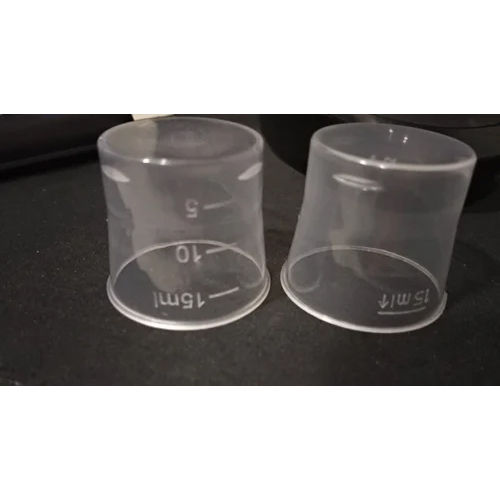125 Ml Measuring Cup
Product Details:
- Product Type Measuring Cap
- Color Transparent
- Weight 10 Grams (g)
- Size 59 mm
- Usage Industrial
- Material Polypropylene
- Click to View more
125 Ml Measuring Cup Price And Quantity
- 4 INR/Piece
- 100000 Piece
125 Ml Measuring Cup Product Specifications
- Industrial
- Polypropylene
- 59 mm
- Transparent
- 10 Grams (g)
- Measuring Cap
Product Description
A culinary utensil called a 125 ml (millilitre) measuring cup is used to precisely measure liquids or other ingredients in small amounts. When fully filled, it typically holds 125 millilitres of liquid. To achieve exact and consistent outcomes, this measurement is frequently employed in baking and cooking procedures
Frequently Asked Questions
Q: A 125 ml measuring cup is used for what, exactly?
A: To precisely measure liquid or dry components in recipes, a 125 ml measuring cup is frequently used in the kitchen. It is especially helpful for weighing out tiny amounts of liquids, such as water, milk, and oil, as well as for weighing out ingredients, such as flour, sugar, and other dry items.
Q: A 125 ml measuring cup works in what ways?
A: There are measurement markers on the side of a 125 ml measuring cup. You can precisely measure 125 ml (millilitres) of liquid or dry substances with the aid of these indicators. To measure the required amount, you either scoop or pour the ingredient into the cup up to the 125 ml line.
Q: Do measuring cups have standards?
A: Depending on the manufacturer and the nation's measurement method, measuring cups can differ slightly. To maintain accurate measures, most measuring cups are somewhat standardised for everyday kitchen use.
Q: Can I measure liquid and dry ingredients in the same 125 ml measuring cup?
A: You can use the same 125 ml measuring cup for liquid and dry components. When measuring dry ingredients like flour, sugar, or cocoa, just be sure to level them off. For precise measurement of liquids, fill the cup to the 125 ml mark at eye level.
Q: How precise is a measuring cup with 125 ml?
A: The design of a measuring cup and how you use it determine how accurate it is. In general, high-quality measuring cups are made to deliver measures that are somewhat accurate. However, using a kitchen scale for precise baking or cooking will get the most exact results.

Price:
- 50
- 100
- 200
- 250
- 500
- 1000+
Other Products in 'Measuring Caps and Cups' category
 |
NEELKANTH POLYMER INDUSTRIES
All Rights Reserved.(Terms of Use) Developed and Managed by Infocom Network Private Limited. |







